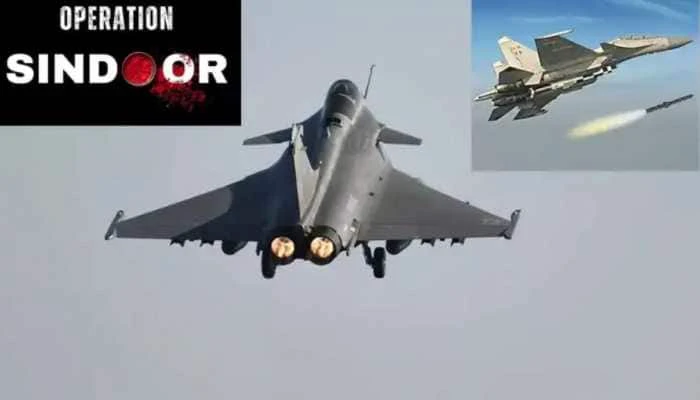New Delhi: Some victories dont need noise. Just precision. And patience. Operation Sindoor proved that. Somewhere over hostile skies, the Indian Air Force pulled off one of the most poetic military deceptions in recent memory.
Pakistan was convinced it had hit a Rafale. Missiles were fired.
Celebrations had started. But what actually fell was not a jet. It was something else. Something smaller. Something smarter.
A device. About 30 kilograms. Tied to the belly of a Rafale by a fiber-optic cable, stretching nearly 100 metres. Always dangling. Always following. They call it X-GUARD.
Inside the Indian Air Force, they also call it Latkan Baba.
Pakistans air command had locked onto the signal. Their radars had read it as an incoming fighter. The system was fooled. So were the missiles. The X-Guard was doing its job. Imitating speed. Mimicking movement. Copying the radar footprint of an actual aircraft. The deception was complete.
What got destroyed was a decoy. The real Rafale returned unharmed. And its payload had already done its job deep inside Pakistani territory.
There had been no official Indian statement. But back in Pakistan, ministers, generals and television anchors had already declared a triumphant hit. They said they had shot down a Rafale. But there was no proof. There never is when you have only hit a ghost.
Behind the success lies Israeli engineering. The X-Guard is designed by Rafael Advanced Defense Systems, one of Israels top weapons firms. The tech was built for electronic warfare. To mislead. To mask. To mess with the minds and machines of any enemy bold enough to fire first.
The X-Guard lives and thinks. With AI running its responses, it creates a convincing illusion. It mimics the signature of a real jet. It creates the same Doppler echo that radars look for. It moves like a pilot would move. It responds like a threat. And it dies like bait.
During Operation Sindoor, Pakistan was not the only one watching. China too had eyes in the sky. Its homegrown radar systems, J-10C, were embedded in Pakistans defense net. Missiles, too, made in China. The PL-15E a sleek, long-range and high-tech killer. Locked in. Launched. Missed.
Those same Chinese systems had tracked Indian jets. They had done their job. Or so they thought. The targets were identified. Missiles had been fired. But they never hit a Rafale. They hit the decoy. The Latkan Baba.
Indian defense experts have quietly celebrated the win. But it was not only them. Former U.S. Air Force pilot Ryan Bodenheimer, who once flew the powerful F-16, shared his take. He said he had never seen an electronic warfare move like this. He called the Indian AI-decoy operation a turning point. He said it was brilliantly executed. That Pakistan never saw it coming.
According to Bodenheimer, this was not only about protecting one aircraft. This was about using decoys so effectively that the real fighters slipped through the enemys air defense like wind through mesh. The Indian jets flew in. Hit military targets. Flew back. Unharmed. Pakistans systems had been looking in the wrong direction.
The operation has become a textbook example of what 21st-century warfare looks like. A silent weapon. No gunfire. Just data and deception. And while the enemies fired in joy, the real work had already been done.
India had outsmarted them. Quietly. Elegantly. And while Pakistan cheered for what it thought was a kill, the actual victory had already returned home without a scratch.
